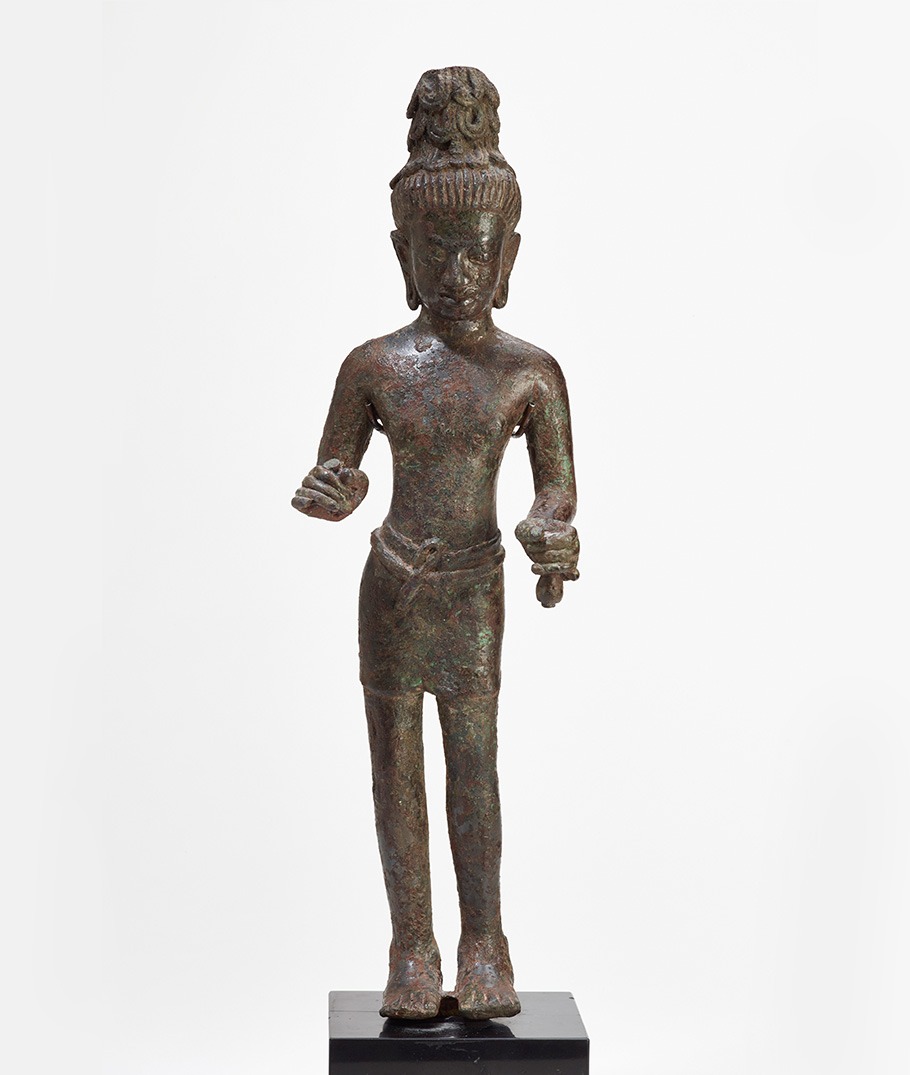 ? ?
? ?
After a torrential rainstorm in August 1964, farmers in northeastern Thailand noticed a stone protruding above the ground. They began digging and ultimately uncovered a pit containing more than thirty bronze bodhisattvas. Scholars believe that the deities were hidden during a period of religious or political instability, perhaps in the eighth century.
After the discovery, some of the bronzes entered Thai museums, and others went onto the international art market. A New Yorker acquired the Sackler bronze sometime before 1971, the year that he sold it to another American collector. The sculpture pictured here, which was found at the same site in northeastern Thailand, is now in the collection of the Metropolitan Museum of Art.

Most prominent bodhisattvas can be identified by the object they hold or by an attribute in their topknot. Avalokiteshvara, for example, typically holds a lotus and has a seated buddha in his hair, while Maitreya carries a vase and has a small stupa atop his head. The attribute in this bodhisattva’s topknot has weathered beyond recognition. He holds a water vessel, but this neither marks him as any particular figure nor distinguishes him from many other images discovered at the same site. His identity thus remains a mystery.